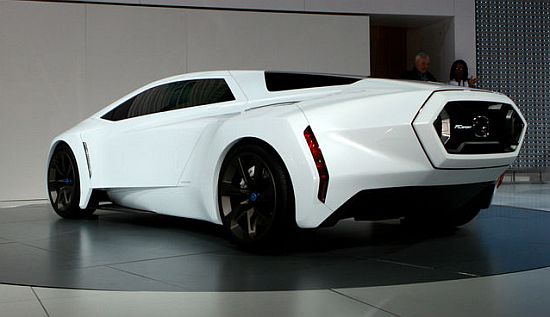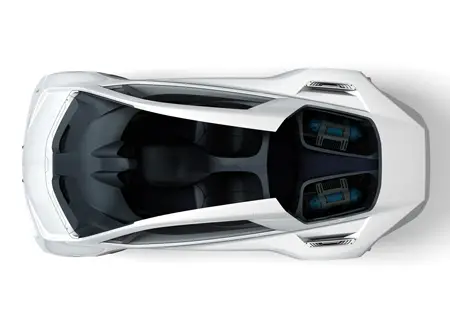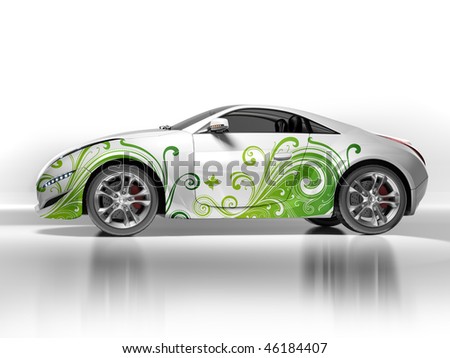Honda Motors Company Ltd. is a Japanese-based car maker registered as a public multinational corporation currently stationed at Minato, Tokyo, Japan. Honda was founded by Soichiro Honda on September 24, 1948. Soichiro was a mechanic and a self-taught engineer who first worked at a Japanese tuning shop named "Art Shokai."
Soichiro, at first worked on developing a piston that he could sell to Toyota, but his first attempt was rejected by the Japanese car maker. After the first rejection, Soichiro worked hard to perfect the design of his piston and a few years later it was accepted by Toyota. After this, Honda opened his own factory which was later damaged by the earthquake. Shortage of gasoline supply due to World War II had further worsened Honda's business situation. Due to this, Honda had failed to sell his cars.
Despite the initial failure, Honda's decided he would attempt to attach a small engine to a bicycle. This instantly became a hit. Honda's idea would eventually lead to the invention of the motorcycle. Honda received the needed capital and began producing the first batch of motorcycles. These events marked the actual start of the Honda Motor Company. Due to stable sales and rising demands for his products, Honda had emerged as the world's largest producer of motorcycles in 1964.
Honda then ventured into developing the company's own version of automobiles. It was in August of 1963 when Honda started the production of his first automobile. The first model that was produced was the T360, a mini pickup truck that was powered by a 356 cc straight-4 engine. Two months after that, Honda was able to produce his first ever car, known as the S500 sports car. The S500 was a rear-wheel drive vehicle driven by chains, just like a motorcycle.
After a few decades, Honda extended its production to other products. At the present, Honda is producing products such as automobiles, motorcycles, and power equipment. Aside from these, the company has also ventured into the production of engines, robots and air crafts, however, its automobile production still remains as one of the largest globally distributed products.
Honda opened its first store in the US in the year 1959. This was established in Los Angeles with only 6 employees. After a few years, Honda's sales in the US had increased and the demand for the products they sell had increased, which led to further expansion. Due to this, Honda established more stores in different areas of the US to meet the needs of its growing customers.
At present, the American Honda Motor Company is currently based in Torrance, California. This regional division of the Japanese car maker is now in-charge of the production and distribution of Honda vehicles all over the US. In Canada, all of the company's sales and production efforts are handled by Honda Canada Inc., which is based in its corporate headquarters at Markham, Ontario. In addition to this, there is also Honda of Canada Manufacturing, based in Alliston, Ontario.
As of now, Honda has many assembling plants all over the globe. Some of these are located in Asia, America, and Europe. With this expansion, Honda emerged as the second largest Japanese car maker in 2001, surpassing Nissan. In August 2008, Honda was able to surpass Chrysler's sales and production. This made Honda the fourth largest car manufacturer in the US and the sixth largest all over the globe.
Honda's position as a leading automobile manufacturer however was affected by the March 2011 earthquake in Japan. The effect of this natural calamity has somehow crippled Honda's production and even forced some of the company's assembling plants to slow their vehicle production down. Honda has subsequently recovered from this particular challenge and is currently making its way back to producing more vehicles and meet the demands of its consumers worldwide.
For now, Honda offers an impressive vehicle line-up, consisting of the Civic, Accord, Insight, Fit, Odyssey, and the CR-V worldwide. Each of these vehicles vary depending on the region where they are purchased. Many of the vehicles vary in engine, accessories and options in order to meet the needs of that particular area.
In the US market, Honda is still experiencing higher demands for its Civic, a line of compact cars which is also the company's second-largest nameplate. This model has been competing with the Toyota Corolla since it was first introduced to the market and up to the present. In order to provide US consumers with more car choices, Honda has introduced other models such as the Fit and the Accord. Both of these models are currently experiencing impressive sales in the US.
In terms of SUV, Honda continues to produce its Pilot and Element for the US, while its production of trucks is only limited to the Ridgeline, since the demand for this type of vehicle has gone down. This is also the case for the minivan. Honda is currently offering the Odyssey as the sole minivan model, since only a few consumers would want to buy this type of vehicle.
In order to tackle the issue of the continuing rise of gasoline prices, as well as the rising environmental concerns about harmful effects of carbon emissions on the natural environment, Honda has also made several hybrids with better fuel economy. These vehicles are composed of the Civic Hybrid, FCX Clarity, Insight, and the CR-Z. Aside from these, Honda is also exploring the possibilities of producing vehicles that are powered by engines that use alternative fuels such as compressed natural gas.
Given these efforts and operational strategies, Honda Motors Company Limited Still remains as one of the most reliable and prestigious car manufacturers in the world that continues to look for ways to provide car finders with vehicles that suit their diverse needs.
Soichiro, at first worked on developing a piston that he could sell to Toyota, but his first attempt was rejected by the Japanese car maker. After the first rejection, Soichiro worked hard to perfect the design of his piston and a few years later it was accepted by Toyota. After this, Honda opened his own factory which was later damaged by the earthquake. Shortage of gasoline supply due to World War II had further worsened Honda's business situation. Due to this, Honda had failed to sell his cars.
Despite the initial failure, Honda's decided he would attempt to attach a small engine to a bicycle. This instantly became a hit. Honda's idea would eventually lead to the invention of the motorcycle. Honda received the needed capital and began producing the first batch of motorcycles. These events marked the actual start of the Honda Motor Company. Due to stable sales and rising demands for his products, Honda had emerged as the world's largest producer of motorcycles in 1964.
Honda then ventured into developing the company's own version of automobiles. It was in August of 1963 when Honda started the production of his first automobile. The first model that was produced was the T360, a mini pickup truck that was powered by a 356 cc straight-4 engine. Two months after that, Honda was able to produce his first ever car, known as the S500 sports car. The S500 was a rear-wheel drive vehicle driven by chains, just like a motorcycle.
After a few decades, Honda extended its production to other products. At the present, Honda is producing products such as automobiles, motorcycles, and power equipment. Aside from these, the company has also ventured into the production of engines, robots and air crafts, however, its automobile production still remains as one of the largest globally distributed products.
Honda opened its first store in the US in the year 1959. This was established in Los Angeles with only 6 employees. After a few years, Honda's sales in the US had increased and the demand for the products they sell had increased, which led to further expansion. Due to this, Honda established more stores in different areas of the US to meet the needs of its growing customers.
At present, the American Honda Motor Company is currently based in Torrance, California. This regional division of the Japanese car maker is now in-charge of the production and distribution of Honda vehicles all over the US. In Canada, all of the company's sales and production efforts are handled by Honda Canada Inc., which is based in its corporate headquarters at Markham, Ontario. In addition to this, there is also Honda of Canada Manufacturing, based in Alliston, Ontario.
As of now, Honda has many assembling plants all over the globe. Some of these are located in Asia, America, and Europe. With this expansion, Honda emerged as the second largest Japanese car maker in 2001, surpassing Nissan. In August 2008, Honda was able to surpass Chrysler's sales and production. This made Honda the fourth largest car manufacturer in the US and the sixth largest all over the globe.
Honda's position as a leading automobile manufacturer however was affected by the March 2011 earthquake in Japan. The effect of this natural calamity has somehow crippled Honda's production and even forced some of the company's assembling plants to slow their vehicle production down. Honda has subsequently recovered from this particular challenge and is currently making its way back to producing more vehicles and meet the demands of its consumers worldwide.
For now, Honda offers an impressive vehicle line-up, consisting of the Civic, Accord, Insight, Fit, Odyssey, and the CR-V worldwide. Each of these vehicles vary depending on the region where they are purchased. Many of the vehicles vary in engine, accessories and options in order to meet the needs of that particular area.
In the US market, Honda is still experiencing higher demands for its Civic, a line of compact cars which is also the company's second-largest nameplate. This model has been competing with the Toyota Corolla since it was first introduced to the market and up to the present. In order to provide US consumers with more car choices, Honda has introduced other models such as the Fit and the Accord. Both of these models are currently experiencing impressive sales in the US.
In terms of SUV, Honda continues to produce its Pilot and Element for the US, while its production of trucks is only limited to the Ridgeline, since the demand for this type of vehicle has gone down. This is also the case for the minivan. Honda is currently offering the Odyssey as the sole minivan model, since only a few consumers would want to buy this type of vehicle.
In order to tackle the issue of the continuing rise of gasoline prices, as well as the rising environmental concerns about harmful effects of carbon emissions on the natural environment, Honda has also made several hybrids with better fuel economy. These vehicles are composed of the Civic Hybrid, FCX Clarity, Insight, and the CR-Z. Aside from these, Honda is also exploring the possibilities of producing vehicles that are powered by engines that use alternative fuels such as compressed natural gas.
Given these efforts and operational strategies, Honda Motors Company Limited Still remains as one of the most reliable and prestigious car manufacturers in the world that continues to look for ways to provide car finders with vehicles that suit their diverse needs.




























